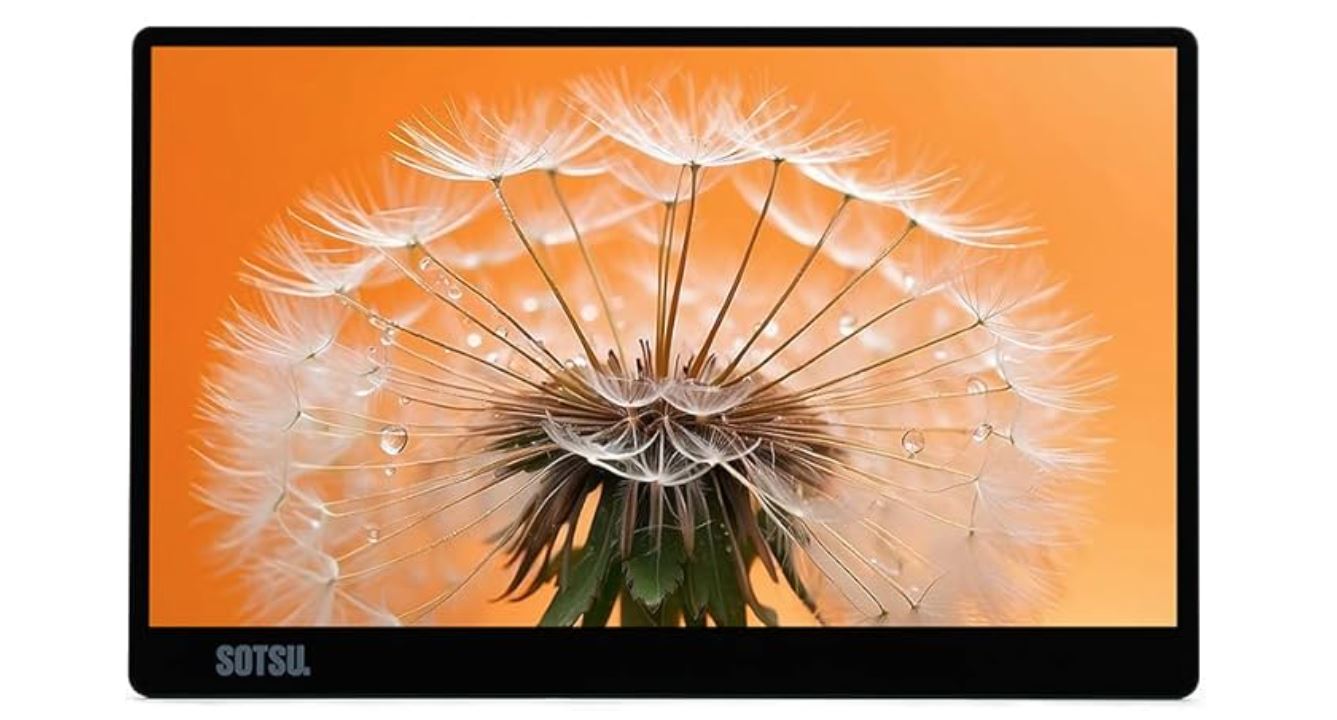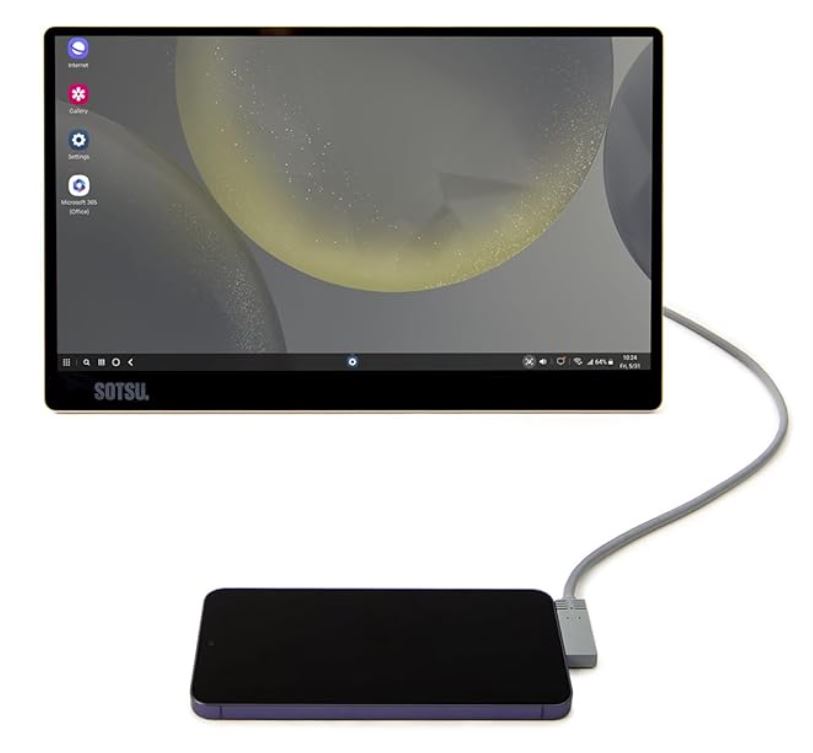The Portable PC Monitor as Director’s Monitor
30 Jul 2024, Posted by in Reviews, Uncategorized
A Director’s Monitor is a fairly high-end device. Typically, you need to be working on a larger production for them to be useful— on smaller projects the “director” is behind the camera and the producer/client is either in front of the camera, or asking the questions, or not even on location. You may also need to be more nimble than a director’s monitor allows, shooting on the fly in public. With bigger projects, though, there may be multiple people who want to see what’s being captured in camera, and a large monitor is not only helpful but increases the sense of professionalism on set. So do you spring anywhere from $600 to $6,000 for a dedicated monitor, plus whatever additional equipment is needed to get the signal from camera to screen? Or can a budget option… a portable PC monitor in this case, do just as well? The answer, to my surprise, was that much of the time the answer was yes, with some hard limitations when it becomes “no.”
This is a review of the SOTSU portable PC monitor, with a larger review (and “How To”) for PC monitors in general… because the Sotsu wouldn’t be my first choice for this set up. I didn’t choose this monitor, it fell into my lap and I put it to use. I discovered that portable PC monitors (PPCMs?) are surprisingly adept as a Director’s monitor. What was most surprising is that there are times when the portable PC screen setup was more convenient than a real professional monitor.
What is a Portable PC Monitor?
First, what is a “portable PC monitor?” These devices are relatively new. As the name demands, they are a portable LCD screen, much like an iPad or tablet but with no “brains”. You can input a video signal via mini HDMI with a USB-C power source, or directly from your phone using USB-C for both power and video signal. What’s remarkable is how little energy these screens consume— generally about 5W, which allows them to be powered by your phone or a very small power brick. The screens are generally 1080p (though they can have slightly higher definition), and range from 10-18 inches. As with every display, there’s a delay, and most models will list the amount in milliseconds (typically between 5 and 20). The cost of these monitors can range from $70 – $300.
How well do they work?
Impressively well, I’d say. My 14” SOTSU provides an image that is vivid and detailed; I had to turn down the saturation slightly to bring it into closer alignment with my camera screen. It connects perfectly via HDMI and reliably via phone/USB-C (though in both cases I sometimes needed to re-connect the power source if it didn’t immediately identify the source). The physical dimension of the SOTSU is 16:9, making a compelling, edge-to-edge display, and its sleek all-metal body exudes professionalism. Most PC monitors have a built-in stand for a table-top, or can be mounted using a tablet holder with 1/4” attachment.
As Many Pros as Cons
When did the SOTSU outshine the professional director’s monitor?
- The short answer is connectivity: the SOTSU gives you four options for connectivity.
- You can take it’s image from a phone which means you can use any wifi transmitter that connects to your phone to send your feed. That’s a nice feature.
- You can connect it to smaller monitors. Over the weekend, I used a wired setup with my SOTSU for a three-camera shoot of a concert. I had my Atomos Ninja connected a AtomX Cast switcher, and the SOTSU wired to give me a large screen. It worked brilliantly. The large, common screen not only assisted in focusing (two of the cameras were on manual focus), but it also provided a better sense of comparative white balance across different cameras in a scene with multiple color temperatures.
- You can connect your camera directly to the SOTSU (though there’s a caveat I’ll discuss later)
And you can use a wired connection with an HDMI receiver as another way of using the monitor wirelessly.
The STOSU is also a power sipper, requiring less battery to function. And the USB-C input provides more power options than many professional monitors. Strangely, its design is also an advantage for your average commercial client. With it’s sleek metal design and beautifully saturated 14” screen, the SOTSU probably appears more professional to clients than a real production monitor. From a “dollar per screen inch” standpoint, a traditional 14” Director’s monitor will range from $400 to $5,000.

Where did the SOTSU fall short of a professional monitor?
The screen on the SOTSU is 400 nits, and it’s the main limitation of the device. For comparison, the Atomos Ninja 5 is 1000 nits. A while back I reviewed the budget Andycine C7 Lite production monitor, which offers 500 nits of brightness; on paper the Atomos is much brighter, but in the field the difference isn’t so dramatic— remember that doubling the light output (from 500 to 1000) is only a difference of one stop of light. So the SOTSU is slightly lower than a budget Andycine monitor, less than one-third a stop. Four hundred nits is plenty bright for indoors, as well as outdoor use in the shade. In direct sunlight, however, you won’t see a thing on screen, and the LCD is highly reflective, so some shady situations may pose problems as well (this was true of the Andycine as well). Keep in mind that production monitors (both Andycine and Atomos) have built in production tools like scopes, etc.; whereas director’s monitors are really designed to view the image.
Second, portable PC monitors are not nearly as rugged as production monitors. While the metal-framed SOTSU has an advantage over most of its competitors, it still feels lightweight and dainty compared to my two Atomos monitors (though similar to the budget Andycine). Your comfort level, especially in the field, may vary. And being “brainless” it cannot show anything but a raw feed. Sending direct from a camera using a LOG profile will show a LOG image; you cannot load a LUT. This isn’t an issue when using a phone (as most phone apps have LUT and LOG profiles built in); and using it as an extension for a Atomos solves that problem as well. Purist may complain that a portable PC monitor isn’t calibrated, and they’re correct. But when is that really an issue? Certainly not when the “director” is the client; and typically the camera person/director/gaffer types doesn’t need a perfectly calibrated screen, either. They’re probably using another monitor in addition to this one anyway. And finally, mounting it using a tablet holder isn’t the most stable of setups; its functional, but you may worry more about someone tripping over its cable or knocking a stand.
What to Consider
Portable PC monitors are designed for indoor use; and while “portable” is in the name manufacturers know that it will mostly likely spend most of its time atop a single desk as a second monitor. So its no surprise that it functions poorly outdoors. Indoors the SOTSU and other PPCMs are very good screens if you’re shooting in a non LOG profile, or have a transmission method that can apply a LUT to your LOG footage. These monitors are lightweight and offer flexible options for both connections and power. The don’t have production tools like scopes, false color, and LUTS unless your intermediary device (I.e. phone app) has them.
Since they’re not designed for production, there are a number of things to look out for in selecting a monitor. Most versions come with a built in stand— make sure it isn’t in the center of the device where it will get in the way of your tablet holder. Second, research the brightness of the model. If it doesn’t indicate how many nits it produces, it’s probably 300. I’d keep 400 as a minimum (500 appears to be the maximum available right now). Confirm that it can be powered by your phone. Larger screens (and brighter) screens may require more power than your phone provides. And lastly, some versions have speakers for audio and other do not. Decide whether you need them. Audio is expected in a Director’s Monitor, but it can also be problematic; if the viewer can hear the on-camera talent it’s rather unnecessary— and if the transmission system has a delay it will produce an echo. If you have a dedicated audio recorder (and you probably do at this level of production) your camera may only be gathering scratch audio.
The Final Word on SOTSU
My SOTSU monitor is quite usable in my opinion, but I wouldn’t necessarily recommend it for production. First, it’s stand is centered on the device, requiring extra a work-around for mounting; and it doesn’t have speakers. The SOTSU is 14” and is priced on the upper end of these monitors at $270. It justifies this price tag by sporting an all-metal body and 400 nits of illumination. But in my opinion, it’s over-priced. Many of its $150-ish competitors are similarly sized and specc’d, though with plastic bodies. While the metal body is an improvement in both durability and aesthetics, I’m not sure it’s worth a $100. Functionally it does a great job, but these three drawbacks keep me from recommending it to others. I’ve “modded” my unit slightly, gluing magnets to the back so I can mount a small power bank. This keeps it more portable. Will I keep using it in production? I think it will find sporadic use, specifically when I know the shoot will be indoors with plenty of time for set-up, and I see the advantage of having a larger screen for myself or others.
If you decide to purchase a PPCM for production there are a few things to keep in mind: make sure it can be powered from a phone, that all the specs are clear, and that others have found it to be reliable. All of the portable monitors out there are from no-name brands, so you’ll want ones that have plenty of user reviews.
Sorry, the comment form is closed at this time.